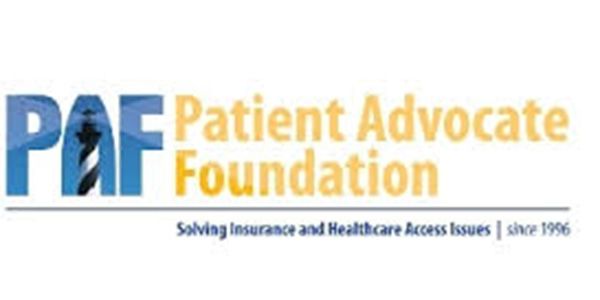Article
Six Ways Patient Advocate Foundation Can Help You
Author(s):

Patient Advocate Foundation (PAF) has been helping individuals with chronic or life-threatening illness access quality health care since 1996.
PAF provides one-on-one assistance to patients dealing with an array of diseases and issues, including barriers in areas beyond insurance and medical navigation. From the start, the foundation’s mission has been to protect patients from simultaneously fighting their disease and their insurance company.
Erin Singleton, PAF’s chief of mission delivery, told CURE that as soon as she joined the foundation she saw the impact on patients’ lives and was compelled to do what she could to reduce the challenges others were encountering. She began working at the company in her early 20s, but she had already experienced a health care crisis of her own so she could relate to the patients who were calling for assistance.
“When you hear a patient say 'thank you' on the other end of the phone, it makes you feel like you’ve made a difference,” she said. “… as PAF has evolved over the 18 years I’ve been here, one item that has always remained constant is our mission to help patients during what’s frequently the most challenging time of their lives and to work alongside them to smooth the path ahead as much as possible.”
One memorable projects that PAF has been involved in to empower patients is the annual National Financial Resource Guide: A State-by-State Directory. In its infancy, it was a 500-page printed guide. Now, it has become the go-to resource for many providers, hospital navigators, and advocates around the country, and it can be accessed through a free mobile app and web search tool.
The foundation has also grown its patient services division over the years to include other areas of support beyond case management. For example, in 2004, PAF added a copay relief division that provides small grants to patients.
“Each year, our case managers saw a shift in out-of-pocket cost and responsibilities falling on patients, and we knew there was a need for financial support, as our case managers were seeing so many patients not able to get access to the pharmaceutical products their doctors were prescribing,” Singleton said. “Since 2004, that program has distributed over $300 million to patients to help them afford their copays.”
For patients interested in PAF, here are six ways the foundation can help.
1) Case Management: Case managers (CMs) provide individualized support and guidance to patients and their caregivers by working with them directly to resolve their health care issues. CMs negotiate pre-authorizations, appeals, and billing problems alongside the patient. They also work to assist in insurance education and enrollment, as well as inform patients about their federal employee protections.
2) Copay Relief: In 2004, the organization launched the Copay Relief (CPR) program geared to provide direct financial assistance to insured patients who were having difficulty affording their medication. The CPR program offers diagnosis-specific grants to help patients pay for pharmaceutical products.
3) Scholarship for Survivors: The Scholarship for Survivors program was born to give students a chance to attend higher education without the weight of financial burden. The program has provided more than 60 individual patient scholarships totaling more than $400,000.
4) Financial Aid Funds: Health care expenses can often strain a patient’s existing budget for household bills. This program provides extra financial support specifically for these household costs.
5) National Uninsured and Underinsured Resource Directory: The Uninsured and Underinsured Resource Directories are search tools providing patients with an array of preventive, emotional, financial, and survivorship programs geared to support their needs.
6) Patient Empowerment Series: PAF hosts a monthly webinar series geared to empower patients with the knowledge they need to advocate for themselves in a health care situation. Topics covered include frequent patient roadblocks, such as constructing a letter for appeal and finding resources available for the uninsured.





